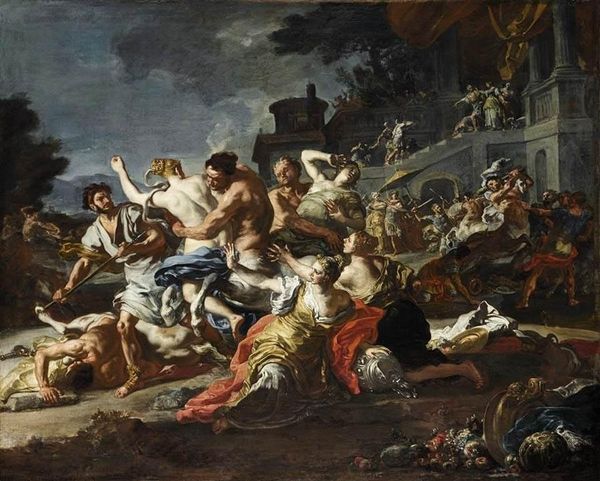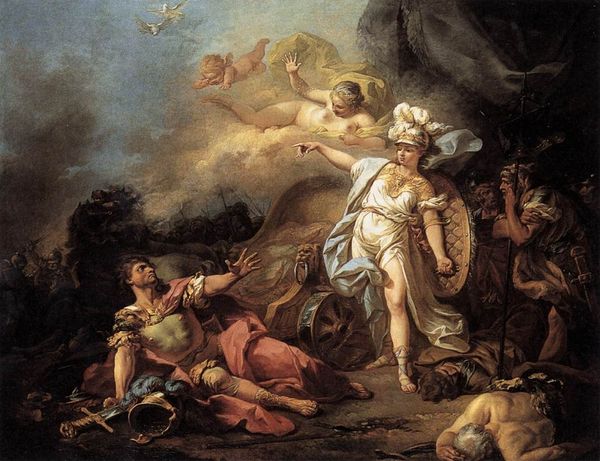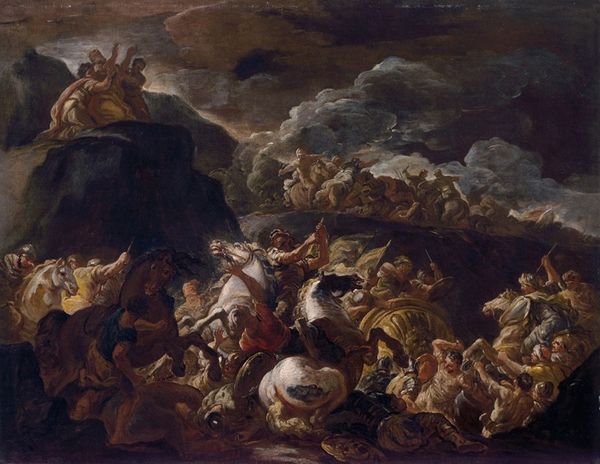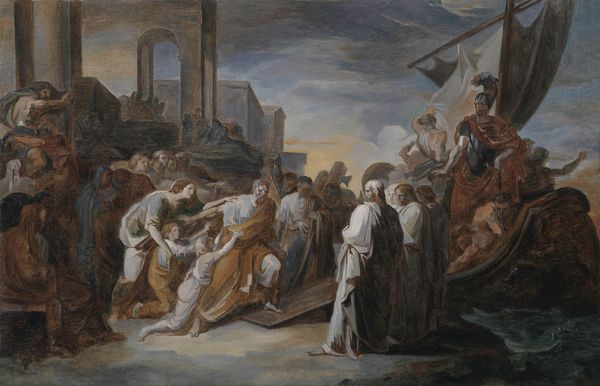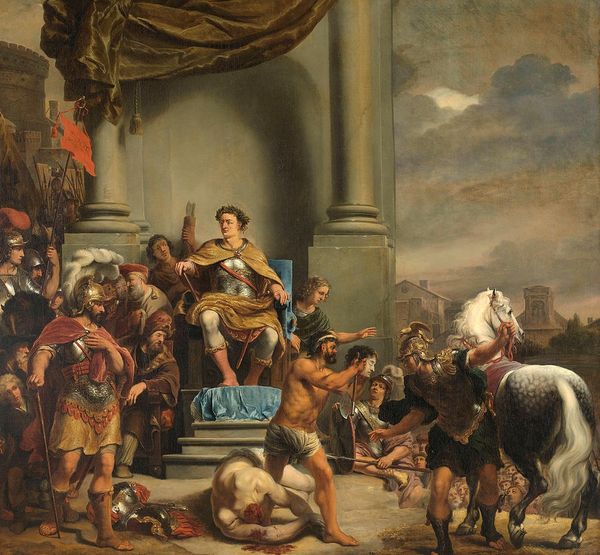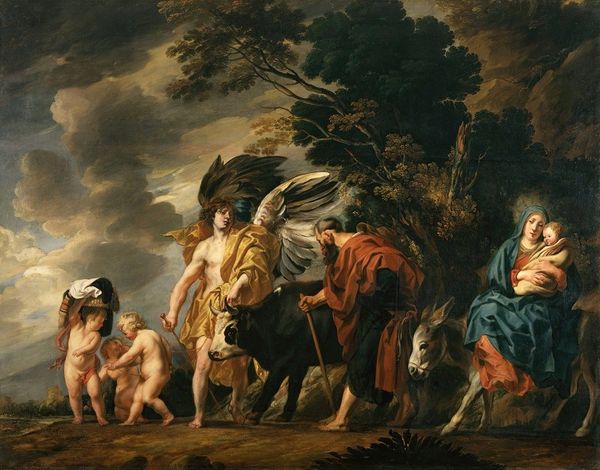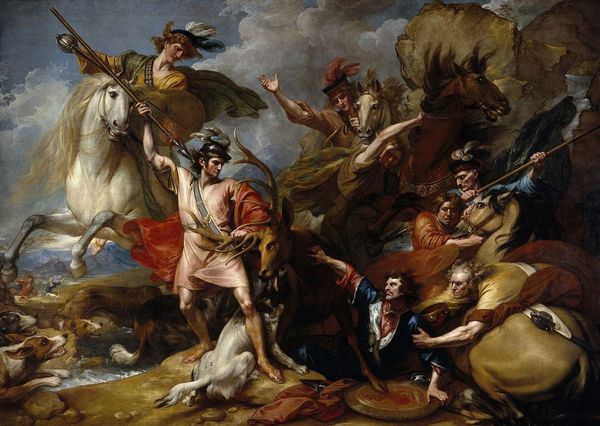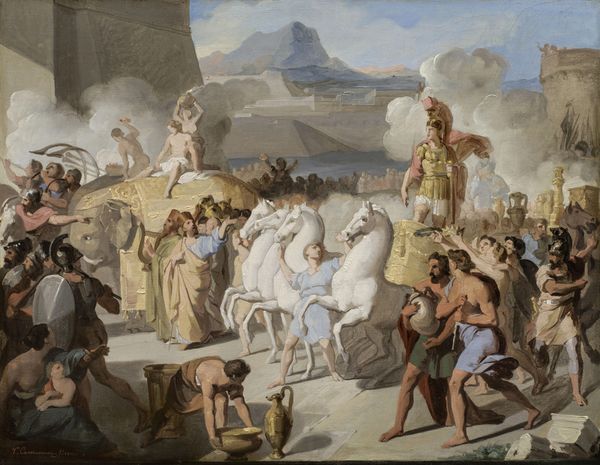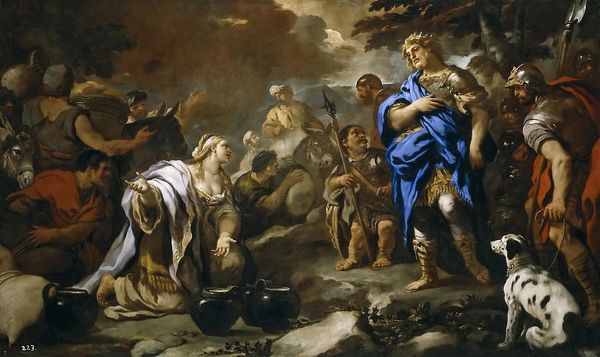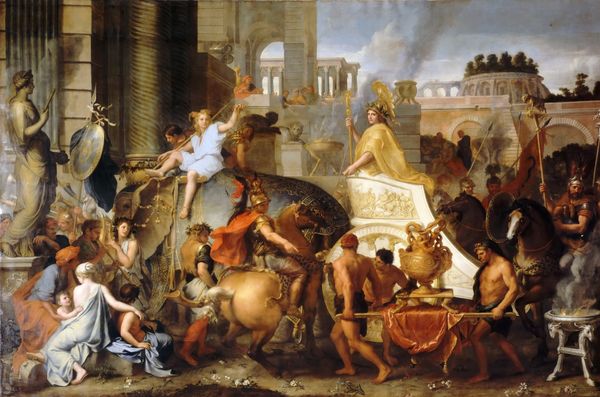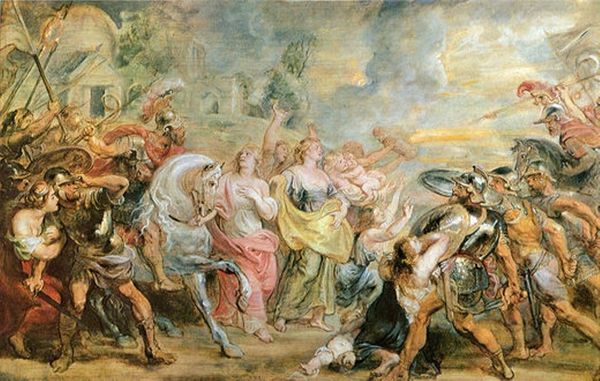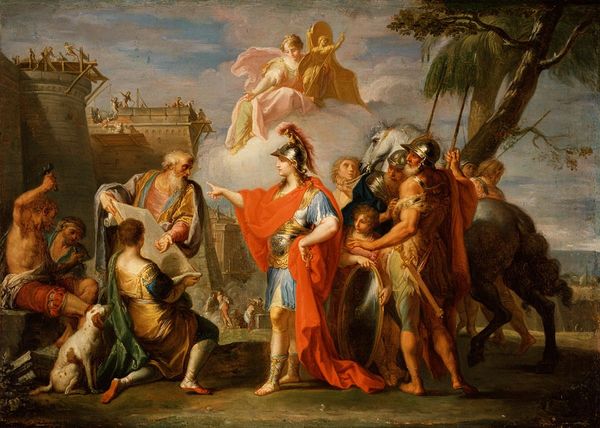
oil-paint
#
allegory
#
baroque
#
oil-paint
#
landscape
#
figuration
#
oil painting
#
history-painting
Copyright: Public domain
Curator: Luca Giordano’s painting, titled “Series of the Four Parts of the World. Africa”, presents us with a captivating allegory. The oil paint gives it a certain luminosity, wouldn't you agree? Editor: Luminous is one word; I would describe it as visually chaotic. All of the forms—the humans, the animals—feel crammed within the composition. What about the materiality, the sourcing of these pigments, hints at its colonial moment? Curator: Good question! Pigments available to Giordano in the Baroque era reflected the accessibility afforded through expanding trade routes. Ultramarine, derived from lapis lazuli, likely sourced from the East. What is striking is the symbolic density, isn't it? The representation of Africa. Editor: Striking, perhaps, for its idealizations rather than its representational accuracy. Notice the theatrical staging of the figures. What about the implications of portraying Africa through classical lenses, lion skin, classical drapery—what social structures does that commentary enforce? Curator: Ah, but consider how those visual cues function within the allegorical program! The lion skin serves as an immediate signifier for Africa, a way to instantly communicate a complex idea to the viewer. What do you make of its palette? Editor: Well, formally, the dominance of earth tones and golds contribute to a feeling of exoticism—though exoticism that serves particular European powers in the shaping of identities. Curator: The landscape itself does have an evocative power; the somewhat fantastical quality reinforces the distance, the sense of ‘otherness’ constructed around the continent in European consciousness. But tell me, do you perceive in Giordano’s hand a critical stance? Editor: Giordano likely did not conceive of himself as a social critic; however, what endures is this Baroque style, heavy with social coding. Today, such painting provides opportunity to analyze the European consumption of far off lands, literally reflected through the price and circulation of goods. Curator: Fascinating! It underscores that works of art are both aesthetic objects and complex cultural artifacts reflecting the systems within which they are produced. Editor: Precisely! Understanding the process illuminates the end product. And vice versa, doesn't it?
Comments
No comments
Be the first to comment and join the conversation on the ultimate creative platform.
